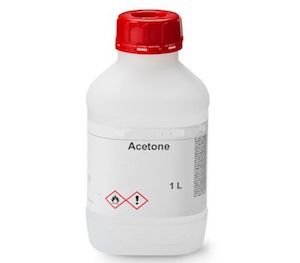Acetone
Also known as 2-propanone, dimethyl ketone
| H.S.Code | 29141100 | CAS No. | 67-64-1 |
| Molecular Formula | C3H6O | Molecular Weight | 58.08 |
| Physical state at 20 °C | Liquid | Refractive index | 1.3588 |
| Odour | Fruity odor | Solubility in water | Miscible with water |
| Density | 784 kg/m³ | Flash point | -17 °C |
| pH value | 7 | Melting Point | -95 °C |
About Acetone
Acetone, or propanone, is an organic compound with the formula (CH3)2CO. It is a colourless, highly volatile and flammable liquid with a characteristic pungent odour. Acetone is produced and disposed of in the human body through normal metabolic processes. It is normally present in blood and urine. It is a common building block in organic chemistry. Acetone is miscible with water and serves as an important organic solvent in its own right, in industry, home, and laboratory.
In the laboratory, acetone is used as a polar, aprotic solvent in a variety of organic reactions. It is a common solvent for rinsing laboratory glassware because of its low cost and volatility. Acetone is a good solvent for many plastics and some synthetic fibers. It is used as one of the volatile components of some paints and varnishes.

Acetone Specifications
| Packaging | 500 ml, 1 Litre, 2.5 Litre |
| Form | Liquid |
| Colour | Colourless |
| Grade | LR / AR / GR / Dried / HPLC / GC / PRA |
| Class | 3 |
| Storage | Store in a dry and well-ventilated place |
| Shelf Life | 12 Months |

1 litre